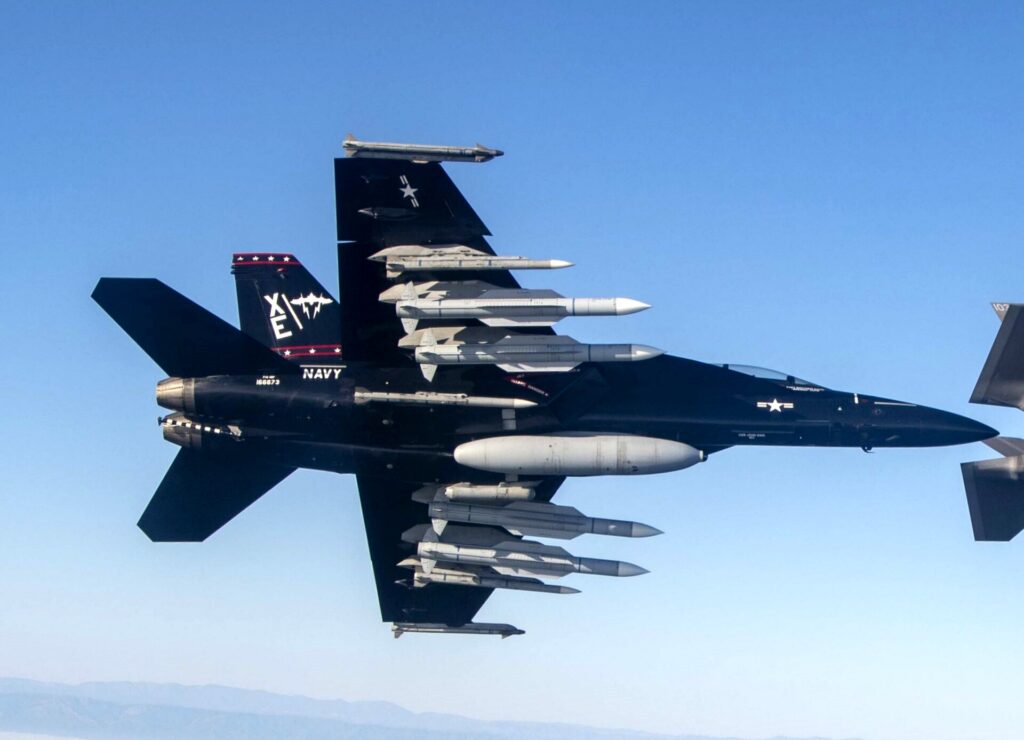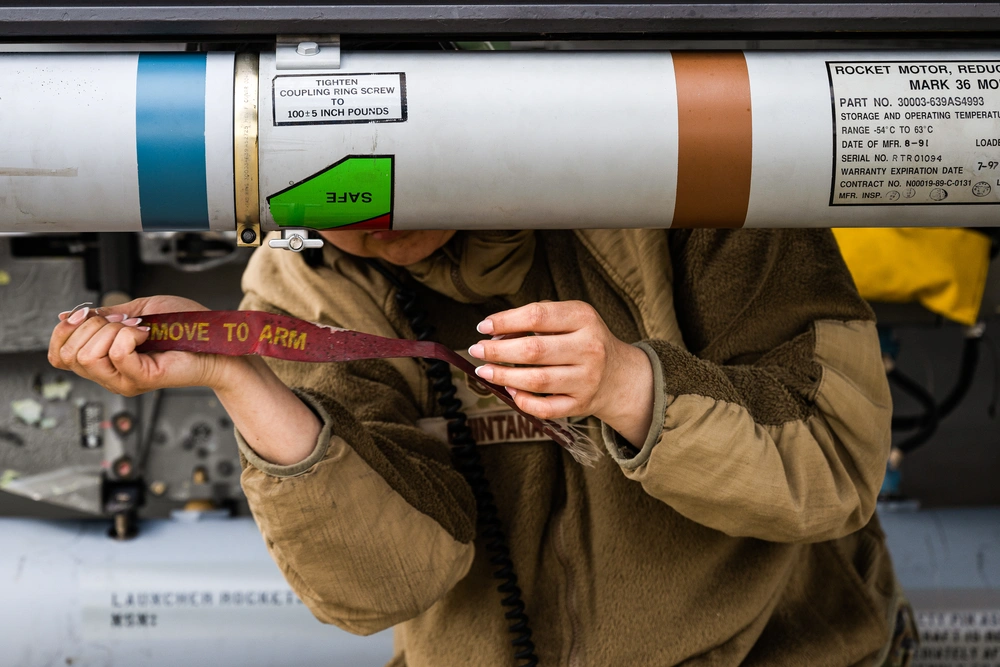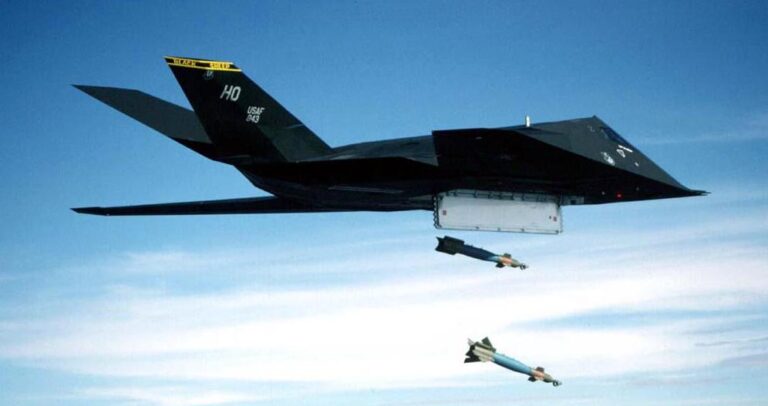Two new American missiles that will make a bang
- By Alex Hollings
Share This Article

Over the past year, the United States has put two new air-to-air missiles into service without a great deal of fanfare. However, these missiles double the number of air intercept weapon types carried by American fighters, and dramatically expand the types of threats these jets can bring down, and, especially, the ranges in which they can do so.
America’s current standard air-to-air missile options is the long-serving, infrared guided, short-range AIM-9 Sidewinder, and the comparatively new, long range, radar-guided AIM-120 AMRAAM. Both of these weapons have seen near-constant revisions since entering service. The latest AIM-9X Block II Sidewinder is said to be able to pull 60Gs while maneuvering toward targets potentially more than 20 miles out. Today’s most advanced AIM-120D-3 AMRAAM is among the best beyond-visual-range weapons in the world, with a maximum publicly disclosed range of 112 miles.
Yet, with a cost around $450,000 and a million dollars respectively, neither of these weapons are great choices for bringing down low-cost kamikaze drones that may range in price from as low as $50,000 to as much as $500,000 – and that is where the AGR-20 FALCO, or Advanced Precision Kill Weapon System II, comes in.
This air-to-air missile technically isn’t an air-to-air missile at all. The AGR-20 FALCO started out as an inexpensive unguided 70mm Hydra rocket, with a new laser guidance section added behind the warhead but ahead of the rocket motor, converting it to a guided air-to-air drone killer. The FALCO can be carried and launched by a wide number of fighters, rotorcraft, and even ground platforms. It uses a laser designator to identify drones from as far as 7.5 miles out and then closes with the target at speeds approaching Mach 3.
At just $25,000 a pop, and thanks to a four-pound blast fragmentation warhead designed specifically for engaging these sorts of high-volume targets, the AGR-20 FALCO is well suited for downing drones and cruise missiles.
It was used in combat for the first time in March of this year to shoot down Houthi drones.
Related: Video: 4 new weapons the US is developing in 2025

On the other end of the spectrum, last year the U.S. Navy introduced the massive and rather expensive AIM-174B on its Super Hornets. This extremely-long-range air-to-air missile started out as the Navy’s ship-launched SM-6 interceptor. The SM-6 is so capable that it’s already America’s only surface-to-air interceptor that’s said to be capable of bringing down hypersonic missiles.
But when hanging under the wing of an F/A-18 Super Hornet, these incredibly capable weapons can engage airborne threats from ranges of at least 150 miles and likely, more than 300, as surface-launched versions can reportedly hit targets from 290 miles out. As such, this weapon doesn’t get its target data not from the launching aircraft, but from stealth fighters flying farther ahead.
The AIM-174B has massive 140-pound blast-fragmentation warhead that not only allows for a wide intercept envelope for airborne targets, but offers a secondary ground-attack capability with seven times the explosive power of a Hellfire missile.
At around 1,900 pounds and more than 15 feet long, the AIM-174 is at least three feet longer and more than five times heavier than the AIM-120 AMRAAM, But, while the AGR-20 is a bargain, the AIM-174’s extreme capability comes with a similarly extreme price tag of an estimated $4.3 million per missile.
Feature Image: A U.S. Navy F/A-18F and F-35, both assigned to Air Test and Evaluation Squadron (VX) 9, fly over the Point Mugu Sea Range in Southern California with a U.S. Air Force F-15 during Gray Flag 2024 on Sept. 24, 2024. (U.S. Navy photo by Lt. Cmdr. Kory Hughs)
Read more from Sandboxx News
- Ukraine captures Russian shadow fleet vessel in Black Sea
- Fighter pilot breaks down how aerial refueling works
- Space Force will get its own special operations element, SOCOM commander reveals
- SOCOM’s new OA-1K Skyraider II aircraft will make America’s elite units operating far from home more lethal
- The Marine’s new air defense system is a game changer
Related Posts
Sandboxx News Merch
-

‘AirPower’ Classic Hoodie
$46.00 – $48.00Price range: $46.00 through $48.00 Select options This product has multiple variants. The options may be chosen on the product page -

‘Kinetic Diplomacy’ Bumper Sticker (Black)
$8.00 Add to cart -

‘Sandboxx News’ Trucker Cap
$27.00 Select options This product has multiple variants. The options may be chosen on the product page

Alex Hollings
Alex Hollings is a writer, dad, and Marine veteran.
Related to: Airpower

Frosted misery: A Navy SEAL in SERE School

How US Special Forces took on Wagner Group mercenaries in an intense 4-hour battle

The social hierarchy of US special operations units

It took more than stealth to make the F-117 Nighthawk a combat legend
Sandboxx News
-

‘Sandboxx News’ Trucker Cap
$27.00 Select options This product has multiple variants. The options may be chosen on the product page -

‘AirPower’ Classic Hoodie
$46.00 – $48.00Price range: $46.00 through $48.00 Select options This product has multiple variants. The options may be chosen on the product page -

‘AirPower’ Golf Rope Hat
$31.00 Select options This product has multiple variants. The options may be chosen on the product page -

‘Sandboxx News’ Dad Hat
$27.00 Select options This product has multiple variants. The options may be chosen on the product page
